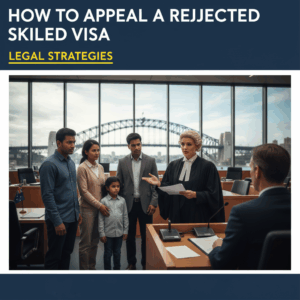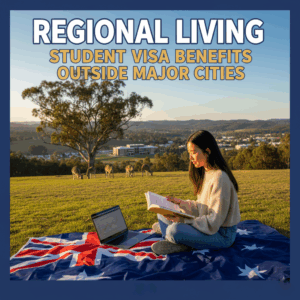Unlock engineer migration to NSW with practical tips, real success stories, and expert advice on skilled visas, assessments, and state nomination pathways.
Introduction
New South Wales (NSW) is at the forefront of Australia’s infrastructure boom, with engineering roles dominating recent skilled migration invitation rounds. If you’re considering engineer migration to NSW, you’re joining a sector experiencing acute demand—projected to leave 105,000 skilled positions unfilled by 2025. However, the pathway can be competitive and complex. This article unpacks skilled migration tips NSW engineers have found most helpful, drawing on real success stories and up-to-date policy insights.
NSW’s Skilled Migration Landscape: Opportunity and Demand
Australia offers multiple engineering skilled visas, with the NSW 190 State Nomination program standing out for its frequent invitation rounds and sector-focused approach. As of 2025, NSW shifted from strict occupation lists to targeting critical sectors like engineering and IT. This opens more doors for professionals in civil, mechanical, electrical, software, and construction engineering.
Key drivers behind NSW engineer migration success:
Engineering and trade occupations dominate skilled invitation rounds; most places in recent NSW 190 invitations have been snapped up by engineers, both onshore and offshore.
Demonstrated demand across infrastructure, energy, digital, and manufacturing projects fuels opportunity.
High EOI (Expression of Interest) points are not everything—realistic profiles with strong English, relevant work experience, and partner points all contribute to success, sometimes even for those below the 90-point mark.
Both regional and metropolitan hubs recruit, with programs like the Skilled Work Regional Visa (491) attracting applicants seeking work in fast-growing areas outside Sydney.
How Successful Engineers Cracked the Migration Pathway
- Navigating the Points Test and Expression of Interest (EOI)
Scoring high on the points test is crucial for engineer migration NSW. Points are awarded for age, qualifications, work experience, English proficiency, and other factors. Many recent invitees were offshore applicants with 85+5 state nomination points and substantial work and English language bonuses.
Tips that helped:
Target bonus categories: English language proficiency and partner skills can push your points total higher.
Accumulate work experience: Most successful applicants had significant relevant experience—10+ years is common for offshore entries.
- Getting Your Skills Assessed—First Time, Right
A positive Engineers Australia migration assessment is non-negotiable. This process validates your qualifications and work history aligned with Australian standards.
Tips from successful applicants:
Prepare a robust Competency Demonstration Report (CDR) tailored to Engineers Australia guidelines; include projects that match NSW’s infrastructure and digital transformation priorities.
Provide accurate, well-documented employment evidence. Mistakes or lack of detail can delay or derail your application.
- Choosing the Right Visa and Timing Your EOI
Both the NSW 190 (Skilled Nominated) and 491 (Skilled Regional) visas are popular. The 190 is highly competitive but offers pathways to permanent residency, while the 491 supports skilled professionals aiming for regional opportunities.
Real-world strategies:
Stay alert to invitation rounds. NSW accelerates invitations near the end of each financial year, so having your EOI and documents ready increases your chances.
Apply for both 190 and 491 if eligible; many engineers receive the first invitation from 491, using it as a pathway to later secure PR in metro NSW.
- Be Sector-Savvy and Flexible
With the shift to sector-focused nominations, applicants targeting high-demand fields—like construction management, renewable energy, and digital engineering—report higher success.
Pro tip:
Align your skills and CDR stories to NSW infrastructure priorities, such as transport networks, energy transition, and major public projects.
- Engineer Migrant Job Search and Networking
Many skilled migrants overlook the importance of simultaneous job search. While visa invitation is not contingent on a job offer, securing employment accelerates settlement and may support further state applications.
Best practices:
Use LinkedIn, Seek, and engineering-specific agencies to connect with NSW employers; highlight your visa readiness and English proficiency.
Attend industry seminars, both online and onshore, to build local references and job leads.
Visa Success Stories: Lessons and Insights
With increasing demand, NSW engineer migration success stories reveal common themes:
Case 1: Offshore Electrical Engineer
Invited with 85 EOI points plus state, English, and partner points, this engineer’s solid experience and clear documentation trumped even higher-point profiles.
Case 2: Onshore Mechanical Engineer
Secured nomination with 90+5 points through NSW 190 after a timely EOI update and positive CDR from Engineers Australia.
Case 3: Software Engineer
Received NSW 190 invitation from overseas with 95 points after adding NAATI-accredited language points (demonstrating the impact of skills stacking on invitations).
Case 4: Industrial Engineer — Regional Route
Obtained subclass 491 Skilled Work Regional Visa by focusing on high-demand regional work and expediting the process through a targeted application for Tasmania, then later moving to NSW for further opportunities.
Practical Application Tips: Streamlining Your Path to NSW State Nomination
- Research the Latest NSW Skilled Occupation List and Sectors
While NSW now targets specific sectors, review state-announced lists and updates for your engineering specialization.
- Perfect Your Engineers Australia CDR
Tailor each episode to skills NSW seeks (e.g., sustainability, digital transformation, BIM, infrastructure boom).
Avoid generic descriptions; match your narrative to Australian standards and project needs.
- Time Your EOI—Don’t Wait
Update your EOI whenever you gain extra points (e.g., new English test scores or skill assessments).
Monitor cutoff dates near the financial year end—invitation rounds become more frequent but spaces fill fast.
- Maximize Your Points Test
Improve English (target 8s in IELTS or equivalent for maximum points).
Add partner skills where possible—partner qualifications and English can make a substantial difference in competitive engineering rounds.
- Embrace Regional Pathways
Don’t limit your options to metropolitan Sydney. Great engineering jobs abound in regional NSW, and the 491 visa can be a strong backdoor to full permanent residency.
Attend virtual jobs fairs and connect with recruiters serving regional infrastructure projects.
Evolving Policy: How Changes in NSW Migration Help Engineers
Recent years have seen NSW migration policy evolve from rigid skilled occupation lists to a more flexible, sector-driven approach. This shift expands opportunities for engineers by focusing on state economic priorities: critical infrastructure, digital transformation, and regional growth. For those with in-demand skills, it is now easier to access state nomination—so long as applications are well-prepared and adapted to current program priorities.
Conclusion
Engineer migration to NSW remains competitive but highly rewarding for those who follow proven strategies. Preparation is vital: focus on the points test, skills assessment, sector relevance, and proactive job search. By embracing the new sector-focused skilled migration pathways and learning from recent NSW engineer migration successes, you can maximize your own chances for success, build your engineering career, and contribute to one of Australia’s most dynamic economies.



